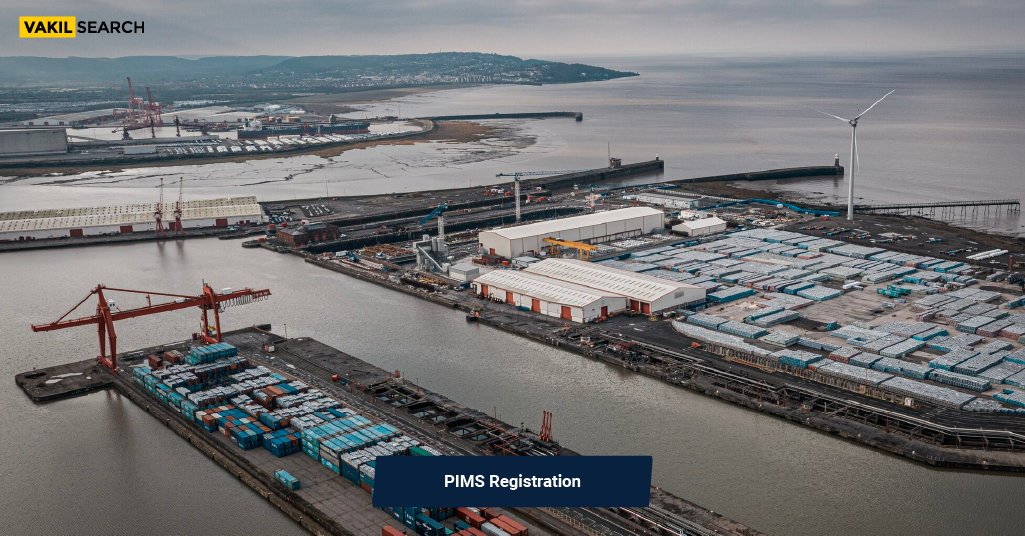Uncover the intricacies of the Paper Import Monitoring System (PIMS) in this guide. Learn why it's crucial for transparent and compliant international paper trade, including key components, benefits, and a step-by-step procedure for obtaining a PIMS certificate.
In the dynamic landscape of international trade, effective monitoring systems are crucial to ensure transparency, compliance, and fair practices. The Paper Import Monitoring System (PIMS) emerges as a pivotal tool in this context, specifically designed to regulate and oversee paper imports. This comprehensive guide delves into the nuances of PIMS, exploring its need, importance, key components, benefits, and the intricate process of obtaining a PIMS certificate.
Need for Paper Import Monitoring System
International trade, particularly in the paper industry, demands meticulous oversight. The need for monitoring systems arises from the complexities associated with paper imports, including quality control, adherence to regulatory norms, and prevention of unfair trade practices. PIMS addresses these challenges, fostering a level playing field and safeguarding the interests of stakeholders.
Importance of Implementing Paper Import Monitoring System
Implementing PIMS is instrumental in upholding the integrity of paper imports. By ensuring compliance with set standards and regulations, PIMS contributes to fair trade practices, protects domestic industries, and maintains the quality of imported paper products. The system plays a vital role in promoting transparency and accountability throughout the supply chain.
Key Components of Paper Import Monitoring System
Product Information
- Detailed Descriptions: PIMS requires comprehensive details about imported paper products, including specifications, composition, and purpose.
- Harmonised System (HS) Codes: Accurate classification of paper items under international HS codes is fundamental for precise identification and monitoring.
Importer Information
- Importer Details: PIMS mandates the submission of information about the importing entity, including name, address, and contact information.
- Importer Code: Each importer is assigned a unique code, facilitating traceability and accountability within the system.
Exporter Information
- Exporter Details: Similar to importers, exporters must provide detailed information, ensuring transparency in the supply chain.
- Exporter Code: A unique identifier for exporters, promoting accountability and facilitating efficient tracking.
Country of Origin
- Origin Verification: PIMS requires verification of the country of origin for each paper product, preventing misrepresentation and ensuring adherence to trade agreements.
Quantity and Value
- Volume and Value: Accurate reporting of the quantity and declared value of imported paper items is crucial for tariff assessment and revenue calculation.
Quality Standards and Certifications:
- Compliance Documentation: PIMS necessitates documentation showcasing adherence to quality standards and certifications, ensuring that imported paper meets specified criteria.
Trade Agreements and Tariffs:
Tariff Information: Information related to applicable tariffs and any preferential treatment under trade agreements must be accurately recorded for transparent trade practices.
Applicability
PIMS is not a one-size-fits-all solution; its applicability varies based on certain parameters. This segment elucidates the scope and applicability of PIMS, outlining the types of paper products covered and the entities obligated to adhere to the monitoring system. A clear understanding of the applicability criteria is crucial for businesses engaged in paper imports.
Benefits of Using Paper Import Monitoring System in Paper Imports:
-
Enhanced Data Accuracy
PIMS (Paper Import Monitoring System) ensures improved accuracy in data recording and tracking throughout the paper supply chain. This helps in minimising errors and discrepancies in import-related information, leading to more reliable and efficient operations.
-
Streamlined Regulatory Compliance
PIMS facilitates compliance with regulatory requirements by automating and centralising the monitoring process. This ensures that importers adhere to relevant laws and regulations governing the paper trade. Regulatory authorities can easily access accurate data, making the compliance process more transparent and efficient.
-
Efficient Risk Management
PIMS provides tools for real-time risk assessment and management. This allows stakeholders to identify potential risks in the paper import process promptly. By having a proactive approach to risk management, importers can mitigate challenges and ensure smoother operations.
-
Improved Supply Chain Visibility
The system offers enhanced visibility into the paper supply chain, enabling stakeholders to track the movement of goods in real-time. This increased transparency helps in optimising inventory management, reducing delays, and improving overall supply chain efficiency.
-
Cost Savings
By automating various aspects of the import process and minimising errors, PIMS contributes to cost savings. Efficient data management and streamlined processes result in reduced operational costs for both importers and regulatory authorities.
-
Data Security and Confidentiality
PIMS prioritises data security, ensuring that sensitive information related to paper imports is protected. This feature is crucial for maintaining the confidentiality of trade-related data and protecting stakeholders from potential data breaches.
-
Improved Decision-Making
Access to real-time and accurate data empowers stakeholders to make informed decisions. Importers can plan and strategise more effectively, while regulatory authorities can respond promptly to emerging trends or issues within the paper import industry.
-
Enhanced Collaboration
PIMS fosters collaboration among stakeholders by providing a centralised platform for information sharing. Importers, exporters, and regulatory authorities can communicate and coordinate more efficiently, leading to smoother transactions and improved relationships.
Features of Paper Import Monitoring System
-
Real-Time Data Tracking
PIMS offers the capability to track and monitor paper imports in real time, providing up-to-the-minute information on shipment status, location, and other relevant data.
-
Regulatory Compliance Tools
The system is equipped with features that automate and assist in regulatory compliance, ensuring that importers meet the necessary legal requirements and standards.
-
Risk Management Tools
PIMS includes tools for assessing and managing risks associated with paper imports, allowing stakeholders to identify and address potential challenges promptly.
-
Centralised Data Repository
All relevant import-related data is centralised in the system, promoting easy access, analysis, and reporting for importers and regulatory authorities.
-
User-Friendly Interface
PIMS is designed with a user-friendly interface, making it accessible to a wide range of users, from importers to regulatory officials, without the need for extensive training.
-
Customisable Reporting
Stakeholders can generate customised reports based on specific parameters, providing insights into various aspects of paper imports for decision-making and compliance purposes.
Import Policy of Paper Products
The ‘Import Policy of Paper Products’ refers to the set of rules and regulations that govern the process of bringing paper goods into a country. This understanding is crucial for businesses involved in international trade. The following points highlight key aspects of the import policy framework for paper products:
-
Tariff Classifications
Tariff classifications refer to the systematic categorisation of goods for customs and trade purposes. In the context of paper products, understanding the specific tariff classifications assigned to different types of paper is essential. This classification determines the applicable customs duties and taxes.
-
Duty Structures
Duty structures outline the rates and types of duties that must be paid on imported paper products. Different types of paper may incur varying duty rates based on their classification. Importers need to be aware of these structures to accurately calculate the costs associated with bringing paper goods into the country.
-
Restrictions and Quotas
Import policies often include restrictions or quotas on certain paper items. These restrictions can take various forms, such as quantity limits or prohibitions on specific types of paper. Businesses must be aware of these restrictions to avoid legal issues and ensure compliance with import regulations.
Excluded Items
The term ‘Excluded Items’ in the context of PIMS (Paper Import Monitoring System) refers to specific categories of paper products that are not subject to monitoring or regulation by the system. While PIMS is designed to cover a wide range of paper products, certain items are intentionally excluded from its scope. This section provides information on the types of paper products that fall outside the purview of PIMS, offering clarity on the system’s limitations and scope.
The exclusion of certain items from PIMS could be based on various factors, such as the nature of the product, its usage, or specific characteristics that distinguish it from the items monitored by the system. By outlining these exclusions, importers, exporters, and regulatory authorities gain a clear understanding of the boundaries of PIMS and the categories of paper products that are not subject to its monitoring mechanisms.
This information is crucial for stakeholders involved in the paper trade as it helps them discern which products require compliance with the PIMS regulations and which ones do not. It also aids in avoiding unnecessary administrative burdens and ensures that the system’s resources are focused on monitoring the relevant and high-priority paper products. Overall, providing clarity on excluded items contributes to a more efficient and effective implementation of the Paper Import Monitoring System.
Implementation and Integration of Paper Import Monitoring System
The effective deployment and integration of PIMS (Paper Import Monitoring System) into existing import processes necessitate careful strategic planning. This involves several key considerations, including adapting the IT infrastructure and providing necessary training to personnel. The goal is to seamlessly integrate PIMS into the current operations of businesses involved in paper imports while minimising disruptions to their overall business processes.
- Adapting IT Infrastructure: Implementing PIMS often requires adjustments to the information technology (IT) infrastructure of a business. This may involve incorporating new software, updating existing systems, or ensuring compatibility with PIMS requirements. Adapting IT infrastructure is crucial for the smooth flow of data and information within the system.
- Training Personnel: The successful integration of PIMS relies on the competence of the personnel using the system. Training programs are essential to familiarise staff with the functionalities of PIMS, ensuring they can navigate the system proficiently. This training may cover data input, monitoring procedures, and compliance with PIMS regulations.
- Minimising Disruptions: Throughout the implementation process, efforts should be made to minimise disruptions to regular business operations. This involves planning for a smooth transition, addressing potential challenges proactively, and providing ongoing support to resolve any issues that may arise during the integration phase.
Paper Import Monitoring System Registration Number
At the core of PIMS is the concept of a unique registration number assigned to businesses engaged in paper imports. This section aims to clarify the significance of the PIMS registration number, its role in the import process, and the procedures involved in obtaining one.
- Significance of PIMS Registration Number: The PIMS registration number serves as a unique identifier for businesses participating in the paper import process. It plays a crucial role in tracking and monitoring import activities, ensuring transparency, and facilitating regulatory compliance.
- Role in the Import Process: The PIMS registration number is used to link specific businesses to their import transactions within the system. It aids in the monitoring of paper imports, enables regulatory authorities to access relevant information, and contributes to the overall effectiveness of the import monitoring process.
- Procedures for Obtaining a PIMS Registration Number: This section outlines the step-by-step procedures that businesses need to follow to obtain a PIMS registration number. This typically involves submitting required documentation, meeting specified criteria, and completing the necessary application processes defined by the PIMS regulatory framework.
Validity of Paper Import Monitoring System Registration Number
Understanding the validity period of a PIMS (Paper Import Monitoring System) registration number is crucial for importers. This refers to the duration for which the assigned PIMS registration number remains active and valid. This segment explores the timeframe during which the registration number is effective, highlighting the importance of timely renewals and adherence to regulatory timelines.
- Duration of Validity: The validity period is the specific timeframe during which a PIMS registration number is considered active and officially recognised by the system. Importers must be aware of this duration to ensure that their registration remains valid throughout their ongoing involvement in paper imports.
- Timely Renewals: Importers are typically required to renew their PIMS registration before the expiration of the validity period. Timely renewals are essential to avoid disruptions in import operations, maintain compliance with regulatory standards, and continue benefiting from the monitoring and tracking features of PIMS.
- Compliance with Regulatory Timelines: The segment emphasises the significance of adhering to regulatory timelines governing PIMS registration. Compliance with these timelines ensures that importers meet the necessary deadlines for renewals and other regulatory requirements, preventing any lapses in their PIMS registration status.
Applicability of PIMS at the Time of Import at SEZ/FTWZ/EOU
Certain economic zones, namely Special Economic Zones (SEZs), Free Trade Warehouses (FTWZs), and Export Oriented Units (EOUs), have unique considerations when it comes to PIMS compliance. This section provides insights into how PIMS is applicable in these specific economic zones, offering clarity for businesses operating within them.
- SEZs, FTWZs, and EOUs: The segment discusses the distinctive aspects of PIMS compliance in Special Economic Zones, Free Trade Warehouses, and Export Oriented Units. These zones often have specific regulations and exemptions, and understanding how PIMS applies in these contexts is crucial for businesses operating within these designated areas.
- Insights for Businesses: The information provided in this section offers businesses operating in SEZs, FTWZs, and EOUs a clear understanding of how PIMS regulations apply to their import activities. It helps them navigate any zone-specific requirements and ensures compliance with both PIMS and the unique regulations of the economic zones in which they operate.
Procedure to Get Paper Import Monitoring System Registration Number
Obtaining a PIMS (Paper Import Monitoring System) registration number follows a structured process, and this segment outlines the step-by-step procedure for businesses looking to secure a PIMS registration number. The purpose is to provide a clear roadmap for successful registration within the system.
- Submission of Documentation: The first step involves businesses submitting the necessary documentation to the relevant authorities overseeing PIMS registration. This documentation may include details about the business, its import activities, and other relevant information required for verification.
- Meeting Criteria: Businesses must meet specific criteria outlined by PIMS regulatory standards. This could include demonstrating compliance with import regulations, ensuring the accuracy of submitted information, and meeting any other prerequisites set by the monitoring system.
- Application Processing: The submitted documentation goes through a processing phase where regulatory authorities review the application. During this stage, officials assess the completeness and accuracy of the information provided by the business seeking PIMS registration.
- Verification and Approval: Regulatory authorities verify the details provided in the application, ensuring that the business aligns with the requirements of PIMS. Upon successful verification, the registration is approved, and a unique PIMS registration number is assigned to the business.
- Issuance of PIMS Registration Number: The final step involves the issuance of the PIMS registration number to the business. This unique identifier is essential for the business’s participation in paper imports, enabling effective monitoring and tracking within the PIMS framework.
Challenges and Solutions in Paper Import Monitoring System Implementation
Despite the advantages of PIMS, its implementation may pose challenges for businesses. This segment anticipates potential hurdles and provides viable solutions, empowering businesses to navigate the complexities of PIMS adoption effectively.
- Data Integration Challenges: Businesses may encounter difficulties integrating PIMS with existing data systems. The solution involves investing in compatible technology, conducting thorough testing, and collaborating with IT experts to ensure seamless data integration.
- Personnel Training: The adoption of PIMS may require training personnel to effectively use the system. A solution involves implementing comprehensive training programs, workshops, and providing ongoing support to ensure staff proficiency in navigating and utilising PIMS functionalities.
- Compliance Concerns: Ensuring full compliance with PIMS regulations can be challenging. The solution involves establishing a robust compliance management system, staying updated on regulatory changes, and implementing internal checks to ensure adherence to PIMS requirements.
- Technical Issues: Businesses may face technical issues during the implementation phase. A solution involves having a dedicated technical support team, conducting regular system audits, and implementing contingency plans to address technical glitches promptly.
In conclusion, the Paper Import Monitoring System is a transformative mechanism in the realm of international paper trade. From its need and importance to the intricacies of obtaining a PIMS registration number, this guide equips stakeholders with the knowledge needed to navigate PIMS successfully. As businesses adapt to evolving regulatory landscapes, understanding and embracing PIMS emerge as imperatives for sustainable and compliant paper imports.
FAQs on Paper Import Monitoring System
What is a Paper Import Monitoring System (PIMS), and how does it function in the import process?A PIMS is a digital platform that tracks and monitors paper imports. It functions by recording real-time data on shipments, facilitating regulatory compliance, and ensuring accurate documentation. This system enhances transparency and efficiency throughout the paper import supply chain. |
Why is the implementation of PIMS crucial in the paper import industry?The implementation of PIMS is crucial as it enhances data accuracy, streamlines regulatory compliance, and mitigates risks. It provides transparency, reduces operational costs, and fosters collaboration among stakeholders, ensuring a more efficient and compliant paper import industry. |
What are the primary benefits of using a Paper Import Monitoring System for businesses and regulatory bodies?The primary benefits include enhanced data accuracy, streamlined regulatory compliance, improved supply chain visibility, cost savings, and efficient risk management. For regulatory bodies, it offers transparency, better decision-making, and centralised data access, leading to effective monitoring and control. |
Which key components constitute a robust Paper Import Monitoring System?A robust PIMS includes real-time data tracking, regulatory compliance tools, risk management features, a centralised data repository, user-friendly interfaces, customisable reporting, integration capabilities with other systems, and a secure audit trail to ensure accountability and traceability. |
How can PIMS ensure transparency and reduce risks in the paper import supply chain?PIMS ensures transparency by providing real-time visibility into the supply chain. It reduces risks through proactive risk management tools, enabling stakeholders to identify and address potential challenges promptly, minimising delays and ensuring smoother paper import operations. |
Are there specific regulations or standards governing the use of PIMS in the paper import sector?While specific regulations may vary, many countries implement PIMS to comply with international trade standards. Businesses engaging in paper imports should be aware of and adhere to the regulatory requirements of the respective countries involved in the trade. |
What challenges are commonly encountered when implementing a Paper Import Monitoring System, and how can they be addressed?Challenges may include data integration issues, personnel training needs, compliance concerns, and technical glitches. These can be addressed by investing in compatible technology, comprehensive training programs, robust compliance management systems, and a dedicated technical support team. |
What are some successful case studies showcasing the effectiveness of PIMS in the paper import industry?Successful case studies highlight PIMS contributions such as improved accuracy, streamlined processes, and enhanced collaboration. These cases demonstrate how businesses and regulatory bodies benefit from increased efficiency and transparency in their paper import operations. |
How can companies integrate or adopt a PIMS within their existing paper import processes, and what considerations are essential during this transition?Companies can integrate PIMS by adapting IT infrastructure, providing personnel training, and ensuring a smooth transition. Considerations include compatibility with existing systems, comprehensive staff training, and addressing potential challenges proactively to minimise disruptions during the adoption of PIMS. |










